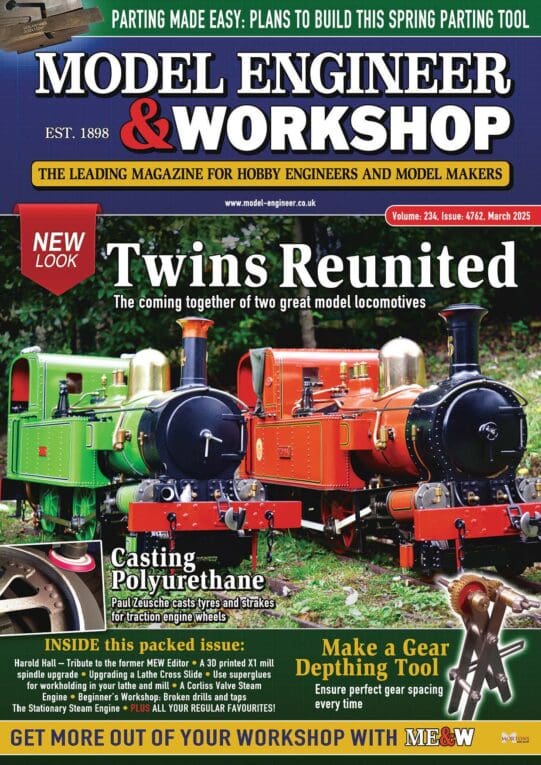Interesting. I bought the 16mm thinking it would be quicker to take less passes (when squaring stock) with a larger cutter than more passes with a small cutter.
It depends. A smaller cutter can be run at a higher spindle speed and that allows for a faster feed rate so each pass does not take as long. So the area being flattened will decide which is faster.
Based on the same cutting speed for your 3 cutters.
4-flute 6mm cutter @ 2000rpm, 0.025mm chip load can be feed at 200mm/min
4-flute 10mm cutter @1200 rpm, 0.025mm chip load can be feed at 120mm/min
4 -flute 16mm cutter @ 750rpm, 0.025mm chip load can be feed at 75mm/min
Now try some pieces of metal
100mm long x 5mm wide, all three cutters can machine that in one pass so the 6mm will be the quickest option doing it in 30seconds, the 16mm the slowest at 1min 20
100mm long x 15mm wide. 6mm cutter needs 3 passes taking a total of 1min 30, 10mm cutter needs 2 passes taking 1min 40 and the 16mm needs one pass taking 1min 20 so not a lot in it
100mm x 20mm wide 6mm needs 4 passes takes 2mins, 10mm really needs 3 passes taking 2mins and 16mm needs 2 passes also taking 2mins 40. so in that case the 16mm is the slowest.
That ignores vertical depth of cut which could well see the 6mm coming out even better.
Other advantages of the 6mm particularly on the narrow stuff is that you will likely end up with at least 1 cutting edge engaged all the time so smoother cutting and less knocking of those gears as mentioned in another thread. Also as each corner will be taking off the same amount of metal be it 6m or 16mm the corners will wear at the same rate so both cutters will become blunt after doing the same amount of work, the 6mm will be a lot cheaper to replace.
And if tram is out as per another recent thread multiple passes of a small dia tool will give a flatter surface than one pass of a large diameter. Lots of very shallow scallops will be flatter than one big concave surface.
Robert Bowen-Cattry.





